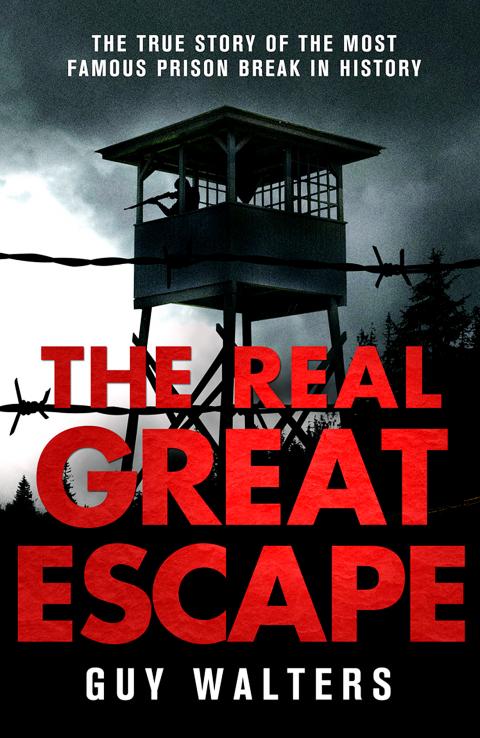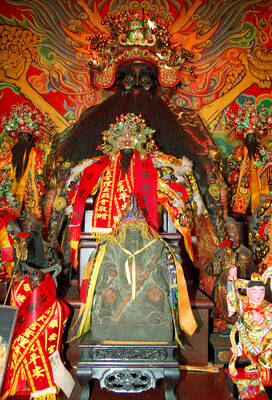It takes courage to demolish a cherished icon, and when that icon is the film The Great Escape, the iconoclast needs steel nerves worthy of the escapers themselves. But that is what Guy Walters achieves in his new study of World War II’s most famous mass breakout, which, far from being a rehash of an oft-told tale, is a clear-eyed inquiry into a myth that does not stand up to examination.
What Walters claims is missing from the film, with its jaunty theme tune and boy-scout characters, is that this was essentially a story of mass murder. His focus is not so much on the heroic ingenuity of the PoWs tunneling themselves out of their camp, but on their ultimate destination. Fifty of the 76 escapees were summarily shot by the Gestapo on Hitler’s orders, and only three (none British) made a successful “home run” to Britain. Was the sacrifice really worth it, Walters asks. His answer is a resounding “No.”
The central figure in Walters’s story is the escape’s inspiring leader, Squadron Leader Roger Bushell (played as “Roger Bartlett” in the film by Richard Attenborough). Bushell was a driven character: charismatic, determined, stubborn, perhaps a little crazy. The son of a mining magnate in South Africa, idolized by his mother, he had an English public school and Cambridge education. He drove fast cars, dated “popsies” and excelled at skiing. Characteristically, he tended to ski over obstacles in his path rather than around them. A skiing accident gashed his face, which lent his appearance a sinister aspect.

Though neglecting his studies for sport, Bushell was no fool; he was proficient in several languages and, despite an indifferent degree, was called to the bar and got several murderers off capital charges. He learned to fly as a hobby, and when war came, found himself commanding a Spitfire squadron. After downing two enemy planes, he was himself shot down over France and captured.
Bushell made two initial escapes — on the second occasion, accompanied by a Czech fellow flier, he reached occupied Prague and spent several months hidden by a Czech family. However, in the manhunt that followed the 1942 assassination of SS overlord Reinhard Heydrich, Bushell’s hiding place was betrayed. The Czechs who had sheltered him were shot, and Bushell himself was roughly handled by the Gestapo.
After this experience, he could have had no illusions about the ruthlessness of the Nazis, and his suffering seems to have sharpened his already intense hatred of his tormentors and his desire to escape them.
Arriving at Stalag Luft III, the huge new camp built for allied flying officers in a gloomy Polish forest, Bushell instantly initiated his plan for a mass breakout, starting three simultaneous tunnels nicknamed Tom, Dick and Harry, on the premise that if one failed and another was discovered, then the third would surely succeed. It says much for Bushell’s drive and leadership skills that the vast organization required to dig the tunnels, dispose of the conspicuous yellow sand displaced by the digging, and to manufacture an enormous array of clothes, passes and other documentation for 200 escapees remained secret.
Walters’s description of the build-up to the breakout makes nail-biting reading. Bushell knew he was risking death, and realized that the vast majority of the fellow escapees — most of whom spoke no German and still wore uniforms unconvincingly disguised as civilian clothes — stood no chance of getting away across thick snow. Bushell justified his grand plan, however, by arguing that hunting such a vast number of escapees would divert German resources from the war. Walters shows, though, that the escape did nothing whatever to hinder the German war effort.
Along with indicting Bushell’s irresponsibility, Walters reveals the extent to which the camp was effectively controlled by its inmates. It was nominally run by senior Luftwaffe officers who had sympathy for their charges and feared the encroaching power of the Gestapo. On a lower level of command, the poor quality of the lesser German guards made them susceptible to bribery and blackmail.
By this stage in the war (1943-1944) Germany was running short of resources, and the prisoners, kept supplied by generous Red Cross parcels, had more food, drink, tobacco and other creature comforts than their guards. Many of the aids used in the escape — passes, uniforms, stamps — were genuine rather than forgeries, smuggled into the camp by suborned guards.
Walters underlines repeatedly that the Germans at the camp, from the commandant Von Lindeiner down, were explicit in warning the Kriegies of dire consequences if they were caught on the wrong side of the wire and fell into Gestapo hands. Bushell disregarded these warnings, and for this, Walters finds him culpable for his own murder and those of his comrades. The great escape, he sadly concludes, was a great folly.

Beijing’s ironic, abusive tantrums aimed at Japan since Japanese Prime Minister Sanae Takaichi publicly stated that a Taiwan contingency would be an existential crisis for Japan, have revealed for all the world to see that the People’s Republic of China (PRC) lusts after Okinawa. We all owe Takaichi a debt of thanks for getting the PRC to make that public. The PRC and its netizens, taking their cue from the Chinese Communist Party (CCP), are presenting Okinawa by mirroring the claims about Taiwan. Official PRC propaganda organs began to wax lyrical about Okinawa’s “unsettled status” beginning last month. A Global

Dec. 22 to Dec. 28 About 200 years ago, a Taoist statue drifted down the Guizikeng River (貴子坑) and was retrieved by a resident of the Indigenous settlement of Kipatauw. Decades later, in the late 1800s, it’s said that a descendant of the original caretaker suddenly entered into a trance and identified the statue as a Wangye (Royal Lord) deity surnamed Chi (池府王爺). Lord Chi is widely revered across Taiwan for his healing powers, and following this revelation, some members of the Pan (潘) family began worshipping the deity. The century that followed was marked by repeated forced displacement and marginalization of

Music played in a wedding hall in western Japan as Yurina Noguchi, wearing a white gown and tiara, dabbed away tears, taking in the words of her husband-to-be: an AI-generated persona gazing out from a smartphone screen. “At first, Klaus was just someone to talk with, but we gradually became closer,” said the 32-year-old call center operator, referring to the artificial intelligence persona. “I started to have feelings for Klaus. We started dating and after a while he proposed to me. I accepted, and now we’re a couple.” Many in Japan, the birthplace of anime, have shown extreme devotion to fictional characters and

Youngdoung Tenzin is living history of modern Tibet. The Chinese government on Dec. 22 last year sanctioned him along with 19 other Canadians who were associated with the Canada Tibet Committee and the Uighur Rights Advocacy Project. A former political chair of the Canadian Tibetan Association of Ontario and community outreach manager for the Canada Tibet Committee, he is now a lecturer and researcher in Environmental Chemistry at the University of Toronto. “I was born into a nomadic Tibetan family in Tibet,” he says. “I came to India in 1999, when I was 11. I even met [His Holiness] the 14th the Dalai